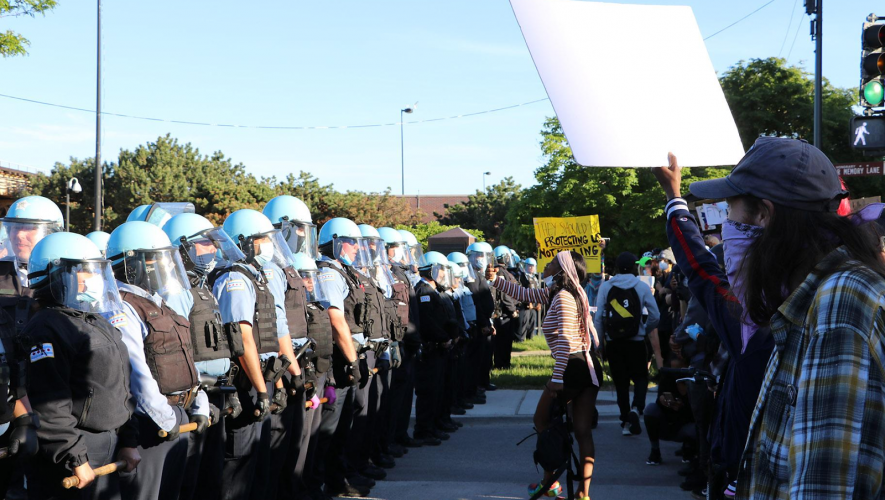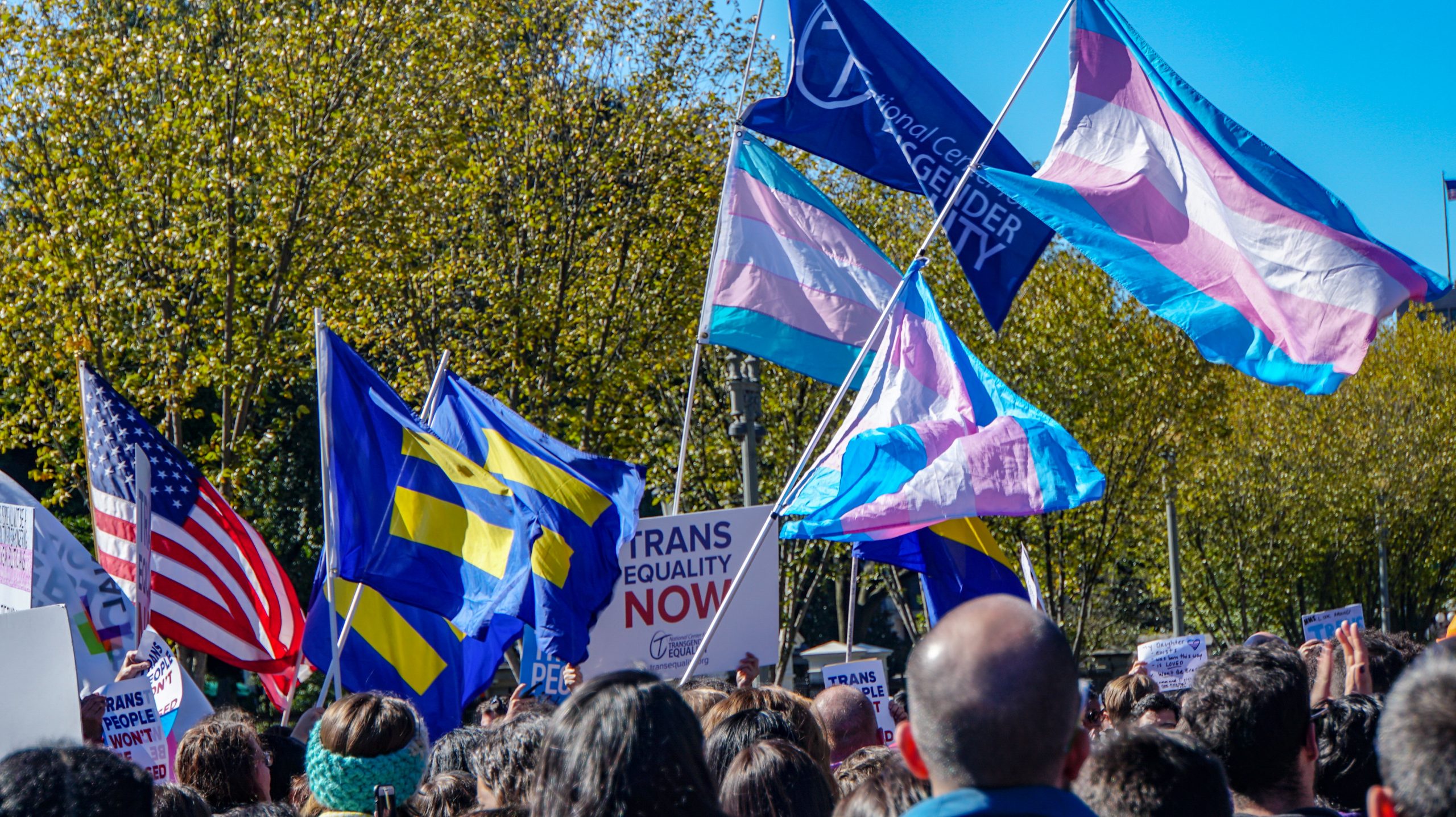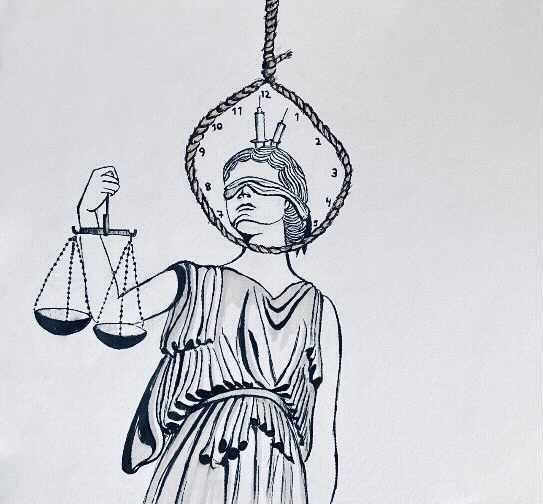In the wake of George Floyd’s murder in Minneapolis, widespread news coverage and nationwide protests forced the city to act. The four police officers involved were fired and charged, and the city council promised to dismantle the police department. This may seem like a victory, but it is enough?
Laquan McDonald was murdered in Chicago in 2014, but the four police officers who covered it up weren’t fired until last year. After Tamir Rice was shot in Cleveland in 2014, the officer who murdered him remained a cop for three more years; the other officer present was only suspended for ten days. Michael Brown’s murderer in Ferguson never faced indictment, and Freddie Gray’s murderers in Baltimore were acquitted or had their charges dropped.
The lack of accountability is a symptom of institutional failure. As Osagie Obasogie writes for The Atlantic, “violence perpetrated by cops doesn’t simply boil down to individual bad actors—it’s also a systemic, judicial failing.” Police brutality persists because protections for law enforcement are embedded in legislation, institutions, and the legal system.
The Myth of Protection
Modern policing evolved from systems that promoted the control of Black people and the working class. In the South, slave patrols were developed to capture slaves attempting to escape. The North wasn’t much better; the first police precincts were established in emerging industrial cities to quell “riots” by exploited factory workers.
These origins make it clear that, since its inception, policing has prioritized the protection of property over human lives. Although Southern slave patrols were abolished along with slavery, they were replaced by police forces designed to control the newly freed Black population. They enforced poll taxes and other voter suppression methods. In the South and the North, racist policing and excessive force emerged to perpetuate White control of political and social systems.
American crime-fighting is rooted in societal control, and race determines what counts as crime and gets targeted for oversight. As sociologist Alex Vitale writes, “American crime control policy is structured around the use of punishment to manage the ‘dangerous classes,’ masquerading as a system of justice.”
White supremacy is embedded in our law enforcement and criminal justice system. Black men are three times more likely than their White counterparts to be killed by police, and Black teens are twenty-one times more likely. Our country lacks effective mechanisms to check and balance a profession created to enforce White supremacy.
However, the attack on Black lives is not simply a matter of failed policing. The idea that police exist to protect us is a myth. The Supreme Court has twice held that the Fourteenth Amendment does not obligate police to protect people from harm. Rather, police serve the state to “fabricate social order,” order that has always meant maintaining White supremacy.
Given this function, it’s no surprise that protections for law enforcement are codified and embedded throughout our country.
Law Enforcement Officers’ Bills of Rights
Many state laws prevent officers from being held responsible for misconduct, including improper use of force. While several of these laws aim to protect the constitutional rights of officers, these affordances are not extended to ordinary citizens. As of 2015, sixteen states have Law Enforcement Officers’ Bills of Rights (LEOBoRs). While they vary from state to state, here are some of the common provisions:
- If a department pursues a complaint against an officer, it must first notify the officer and their union.
- The officer is given a “cooling off” period before they have to respond to department questions.
- In some states, this is around twenty-four to forty-eight hours. In others, like Maryland, it’s ten days.
- The officer must be informed of the complainants and any testimony against them before they are questioned.
- In some states, the officer is allowed to review video footage of an incident. This advantage is not granted to the complainant.
- During questioning, investigators may not harass, threaten, or promise rewards to the officer.
- This privilege is not granted to most civilian suspects during routine interrogations.
- If an officer is suspended, the department must continue to pay their salary, benefits, and attorney’s fees.
The concept of a law guaranteeing rights for law enforcement is not inherently wrong, but these provisions are. They enable police officers to act as though they are above the law. This power imbalance is especially dangerous when civilians accuse officers of misconduct, as the victims are at a concrete disadvantage.
Police Unions and Culture
These provisions, as well as the unions that lobby for them, reflect a dangerous policing philosophy. In theory, police unions seem like a good thing; officers should be entitled to organize like any other profession. However, these unions embody regressive policing—they protect cops and preserve their jobs at the cost of transparency and accountability.
Union contracts act as a safety net for officers and establish countless privileges, similar to those provided in LEOBoRs. Per a 2002 report, departments with police union contracts are half as likely to validate an excessive force complaint, even though they receive 50 percent more complaints. Furthermore, police departments with more protective union contracts are more likely to kill unarmed civilians. These contracts directly hurt Black communities; despite being more likely to suffer misconduct and the use of force, Black Americans are less likely to have their complaints sustained by departments.
In addition to contracts, police unions lobby for legislation that reduces transparency and liability. In New York, Section 50A makes personnel records for police officers “confidential and not subject to inspection or review” except by court order. Twenty-two other states and Washington, DC, make disciplinary records confidential; fifteen other states severely limit access to records. Many states wipe records clean after a set period, some as short as six months.
Police unions frequently oppose the creation of civilian review boards and take steps to weaken established ones. Often, review boards simply gather evidence and cannot give recommendations or discipline officers. Some union contracts mandate internal review boards, which inherently support their own and often allow officers to resign before an investigation. In 2010, David Cornelius Smith died in a Minnesota YMCA after an officer kneeled on his neck for four minutes while another straddled his legs; after an internal review, the officers faced no discipline.
When an officer is accused of misconduct, unions can help an officer appeal the decision to an independent arbitrator. In Minnesota, officers are reinstated 46 percent of the time after appealing their termination. This rate is similar to that of other unions, but the way in which these cases are analyzed after appeal poses an issue.
Rather than assessing the misconduct and the reason for termination, arbitrators look at the circumstances, such as the officer’s past record and what kind of discipline was previously imposed in similar situations. They also focus on whether the department had a specific policy or training in place regarding the circumstances. For arbitrators, this system ensures due process; however, it goes beyond preserving legal rights. It excuses and perpetuates misconduct.
Although police unions originated with the same desires as other organized labor forces—such as reasonable hours, better working conditions, and fair pay—they are still a part of historically unjust policing. Consequently, they reinforce the White supremacy in criminal justice and have deadly consequences for Black communities. Furthermore, these unions continue to appoint White leaders who “consistently take stances against the safety and rights of Black Americans,” even as law enforcement becomes more racially diverse.
Unions, through the policies they lobby for, encourage the “Blue Wall of Silence”—the informal rules that cause cops to ignore each others’ misconduct. This culture prevents police departments from disciplining officers and discourages officers from holding each other accountable.
In Baltimore, Joe Crystal reported fellow officers for excessive force. Consequently, he stopped receiving backup and had a dead rat left on his windshield. He was told by his supervisor to “keep a lid on it” and was turned away by his union leader. Crystal’s story reflects the “blood in, blood out” culture that makes it impossible for law enforcement to report misconduct. Even after officers retire, they are still expected to abide by this code of silence. Ex-officers face backlash for testifying against current ones. This culture reflects the lack of transparency and corruption within policing institutions.
Qualified Immunity
Even if a victim overcomes these legislative and institutional challenges, the legal system still poses several obstacles. Long-established Supreme Court precedent makes it difficult to convict an officer of excessive force.
In 1967, the Supreme Court established qualified immunity as protection for government officials in cases of minor infractions. It was intended to protect civil servants acting in good faith who genuinely thought they were following the rules. However, the 1982 decision in Harlow v. Fitzgerald dismissed the good faith requirement, paving the way for the expansion of qualified immunity.
Qualified immunity shields police officers from lawsuits unless they violate a “clearly established” right. To win, victims must find another case with the same exact circumstances that sets a precedent for wrongdoing. This standard creates an endless cycle of failed attempts to hold officers accountable.
Traditionally, qualified immunity cases were always two-pronged. First, the judge would assess whether an officer used excessive force. Second, they would determine if the officer violated a “clearly established” right. However, in the 2009 decision Pearson v. Callahan, the Supreme Court allowed judges to bypass the question of excessive force. This ruling makes it easier for judges to dismiss cases and further shelters officers from punishment.
This system also discourages claims from being brought in the first place. Lawyers typically take excessive force lawsuits on a for-fee basis, meaning that they are paid only if their client wins. Because so many cases are dismissed on the grounds of qualified immunity, lawyers have less incentive to take on these suits, and victims have a harder time finding representation.
Objective Reasonableness
Qualified immunity isn’t the only legal doctrine protecting law enforcement. Claims of excessive force are held to an “objective reasonableness” standard, which the Supreme Court established in 1989 in Graham v. Connor. Dethorne Graham suffered a broken foot, cuts on his wrist, a bruised forehead, and an injured shoulder after being forcibly restrained and thrown against a car by police while experiencing a diabetic insulin reaction. When he asked the officers to look in his wallet for a diabetic decal, an officer replied, “I’ve seen a lot of people with sugar diabetes that never acted like this. Ain’t nothing wrong with the motherfucker but drunk. Lock the son of a bitch up.”
Prior to this case, Johnson v. Glick held that excessive force required an officer to use force “maliciously and sadistically for the very purpose of causing harm.” In contrast, Graham held that the jury should consider excessive force “from the perspective of a reasonable officer on the scene, rather than with the 20/20 vision of hindsight.”
At first glance, this seems like a positive win for victims of police brutality; however, this standard has protected cops since its implementation. When Graham’s case was remanded to the lower court, the jury used this new framework to side with the officer.
The opinion in Graham does little to clarify what “reasonable officer” means. Furthermore, it has caused police departments to create equally vague standards. A recent study in the Cornell Law Review found that use-of-force policies in the seventy-five largest US cities regularly fail to provide meaningful instruction on when and how to use force. Only 31 percent of policies require officers to exhaust alternatives before using deadly force, and only 17 percent instruct officers to use force that is proportional to a person’s resistance. Nonetheless, all of these policies cite Graham’s “reasonable officer” standard.
Qualified immunity and objective reasonableness are only the beginning of legal protections for cops. Most police officers benefit from an American predisposition to side with law enforcement. Grand juries are often reluctant to indict police officers. Prosecutors and judges are inclined to dismiss misconduct cases. When cases do go to trial, juries are less likely to convict. From January 2005 to April 2017, only 35 percent of arrested officers were convicted, about half the civilian conviction rate.
Where Do We Go From Here?
These issues are only the tip of the iceberg; there are countless other faults within our criminal justice system that protect law enforcement and hurt those who try to hold them accountable. It’s impossible to ignore how these broken systems impact low-income communities and people of color, especially Black communities.
Reforms targeting these issues will not undo centuries of enduring, systemic racism. They are ineffective and fail to improve trust in law enforcement. Modern policing is rooted in racist slave and property control systems. Its focus has always been property, not serving communities. Therefore, the concept of “procedural justice”—that if police apply the law in an unbiased and procedurally proper way, public trust will increase and fewer violent confrontations will occur—is a fallacy.
Modern law enforcement has failed, and we can no longer afford to fund failure. We must reject intensive over-policing and invest in policies that improve public safety and promote racial justice. Over the past forty years, the scope of policing has vastly expanded to encompass homelessness, untreated mental illness, and youth violence; consequently, the policing of these issues has intensified. Policing and criminalization are not a solution to social issues.
It’s time to reconsider the role of the police and establish new institutions that strengthen communities. Policing costs around $115 billion annually; in Los Angeles alone it costs $1.8 billion, which is more than half of the city’s general fund. These budgets should be reallocated to economic initiatives that address racial segregation and reduce the need for police. This means investing in affordable housing, training mental health professionals to respond to corresponding 911 calls, and funding educational services so that they’re no longer dependent on property taxes.
Most cities already have organizations or programs that attempt to address these issues; they are just drastically underfunded. Reallocating policing budgets would enable these initiatives to thrive. Furthermore, advocacy groups in cities around the country have developed proposals and strategies for their respective areas.
In Durham, North Carolina, Durham Beyond Policing has proposed a Community-Led Safety and Wellness Task Force with the goal of maintaining public safety and developing “viable structural alternatives to policing and incarceration.” In Eugene, Oregon, the CAHOOTS program provides crisis intervention through 911 dispatchers. In Chicago, the Black Youth Project has developed an “Agenda to Build Black Futures,” which provides economic and social reforms to address our country’s structural racism. These organizations provide starting points for any city looking to rethink their approach to public safety.
This isn’t a case of “a few bad apples.” This isn’t a case of good cops and bad cops. The system is broken, racist, and oppressive. It does not hold officers accountable for their actions, and it never will.



